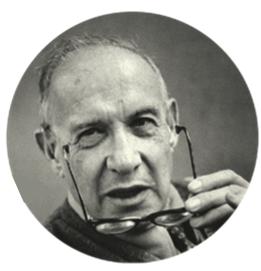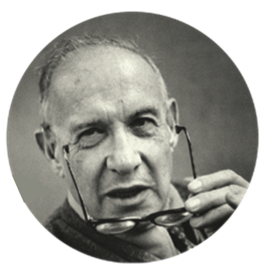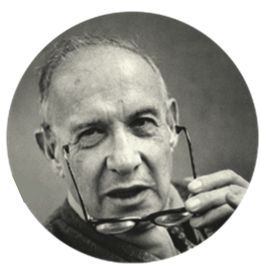Learn Drucker's Approach to Change
Learning Objectives
After completing this unit, you’ll be able to:
- Explain why organizations need to continuously change.
- Describe Peter Drucker’s approach to change.
- Summarize a best practice approach for managing in two time periods.
Predict the Future By Creating It
|
“The best way to predict the future is to create it.”
—Peter F. Drucker |
|---|
Change is constant in the world of business. And now more than ever, with the rapid pace of technology, we can expect more changes are on the way. In this module, we look at what change means for organizations. We explore why it’s essential to seek out change, what it takes to be a change leader, and how you can help lead change. Based on the Drucker quote, you can probably guess where we’re heading. Let’s jump right in!
Develop an Appetite for Creative Destruction

How about a little “creative destruction” to kick things off? Don’t worry, we’re not going to break anything. Widely taught at business schools, creative destruction is a concept originated by renowned economist Joseph Schumpeter. It describes the incessant process of industrial mutation and transformation—in which even successful organizations are replaced by more innovative ones.
Examples are easy to find—think mail order catalog services replaced by online retailers, or landline phones replaced by mobile phones. And it won’t stop there—imagine a world of interconnected smart devices, self-driving cars, and artificial intelligence embedded in our daily lives.
Drucker thought about this topic a lot, and recommended a path forward: developing our organizations into “change leaders.” That includes enterprises that recognize the opportunity for change, develop a vision of the future, innovate around products and services to create customers, and innovate around how they deliver solutions to customers.
|
“…unless an organization sees that its task is to lead change, that organization—whether a business, a university, or a hospital—will not survive. In a period of rapid structural change the only organizations that survive are the ‘change leaders.’”
—Peter F. Drucker |
|---|
Lyft and Uber are examples of companies leading change through innovation and disruption. Their founders recognized the rising demand for convenient, low-priced transportation, a population of car owners willing to earn money in their downtime, and advances in mobile phones and technology to make it all work. And then envisioned a new paradigm to transform an industry.
By understanding what it takes to be an organizational change leader, we can help transform our organizations into customer and market-driven powerhouses. In the next sections, we look at how this is done.
Manage with Ambidexterity

Have you ever needed to be in two places at the same time? Change management is a little like that—to effectively manage change, you need to be working on both the present and the future. Drucker described this as “managing in two time periods.” Others have described similar concepts such as the “ambidextrous organization.” Although it sounds simple, it’s tougher to accomplish because it requires getting everyone in the organization to work in two time periods as well.
|
“Management…has to live always in both the present and future. [It] must keep the enterprise successful and profitably in the present—or else there will be no enterprise to enjoy in the future. It must simultaneously make the enterprise capable of growing and prospering, or at least surviving in the future—otherwise it has fallen down on its responsibility.”
—Peter F. Drucker |
|
|---|
Managing in the present is obviously vitally important. However, it’s not uncommon for day-to-day activities to become overwhelming. As a result, many managers find themselves unbalanced—spending more than 95% of their time on the here and now. Being too focused on the present means there’s not enough time spent working on the future.
Kodak is a classic example of being too focused on the present, and missing a huge opportunity. Kodak was once a global powerhouse and household name. They invented the first digital camera way back in 1975. At the time, they were so focused on their highly profitable photographic film business that they didn’t want to cannibalize it. So Kodak shelved the idea, making some money by licensing the patent, but missing the much bigger opportunity. Kodak still exists today, but it’s no longer the dominant company it once was—and many millennials have never even heard of them.
Drucker recommended that at least 10–20% of an executive’s time and resources be spent on the future. Effective management involves understanding and predicting market and customer changes and developing a clear, motivating vision.
For example, Amazon.com recognized the potential of cloud services at an early stage—when many people had never heard of it. Even though its present business at the time was online retailing, the company set forth to develop the future: Amazon Web Services (AWS). Along the way, they took a lot of heat from investors that wanted better financial returns from the online retailing business. Amazon’s executive team stuck with their decision, and grew AWS into a $10+ billion (yes, billion) a year business. They described their decision to continue with AWS as a “willingness to be misunderstood.”
Effective management makes the time to generate results today, while also thinking about the future and taking action in both time frames to be a change leader.
Summary
In this unit, we examined how the process of creative destruction is an opportunity for organizations to become change leaders. We explored how managing in two time periods helps us get results today, while also allowing the time to create the future. In the next unit, we go a step further by looking at the best practices of change leading organizations.



